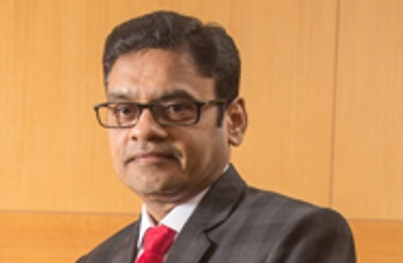In terms of credit process Mirae has its own rating model and dedicated credit analysis personnel
BFSI Industry Interview

Mr. Mahendra is responsible for managing fixed income assets across all products. He has over 25 years of experience in the field of financial services including 11 years of experience in Fixed Income funds management. He is overall responsible for supervising all Debt schemes of the Mirae Asset Mutual Fund. Key funds managed by him include Mirae Asset Savings Fund, Mirae Asset Dynamic Bond Fund and Mirae Asset Cash Management Fund.
Prior to this assignment, Mr. Jajoo was Director with AUM Capital Markets Ltd. He has also been associated with organizations like Pramerica Asset Managers Pvt. Ltd., Tata Asset Management Ltd., ABN AMRO Asset Management Ltd and ICICI Group
Credit risk related concerns notwithstanding, several debt mutual funds have outperformed equity funds in the last one year. Top performing long duration, dynamic bond funds and several other debt fund categories have given excellent returns. Do you expect debt funds to sustain their strong performance in the near to medium term?
We believe that credit risk is permanent with very poor chance of a recovery whereas interest rate risk is temporary and there is always a fair chance to recover from a phase of volatility. The investors who remain true to their investment goals and remain unfazed in turbulent times normally reap the maximum benefit. Given currently accommodative stance of RBI as well as major global central banks, it’s only reasonable to expect continued positive momentum in debt markets. However, we just have had a very good last year for duration product and as such chances are volatility will spike significantly. So investors will need to have high conviction and patience to be able to gain from the same.
The RBI has made several repo rate cuts this and the comments of the RBI Governor recent comments indicate more rate cuts in the future. What is your outlook on interest rates and bond yields?
The global and domestic growth outlook is subdued at a time when inflation globally remains below the central bank’s target. With little to literally no space for fiscal expansion and with decent monetary slack in form of high real interest rates in India presently, the only likely way out we see is further monetary policy easing. Keeping that in mind we see bond yields continuing to ease in near term.
What are your views on the Budget and its impact on the debt market in near to medium term?
The Union budget for FY 20 lays a clear vision and roadmap for achieving the inspiring target of India becoming a $5 trillion economy. The critical issues have been clearly identified and grouped appropriately. Focus remains on investment laid growth in key areas of infrastructure creation and upgradation. Govt has not shown any sense of desperation on slowing growth but on the other hand, seems to be moving ahead with a clear long term vision with utmost confidence and sense of purpose. With a firm foot on fiscal prudence and consolidation, budget should be positive for debt markets.
Despite FII outflows from the stock market, FII inflows in the debt market have been robust for the last couple of weeks. Do you expect this trend to continue?
Globally the debt markets are very different from what they are in India. The yield is ultra-low in a lot of markets,zero or even negative in some of the developed markets. In case of India, although the yields have come down since the start of the year, they are still attractive when compared with the developed countries. So from the Indian perspective, with a stable currency, prospects of growth revival, reforms taking place and expectations of more rate cuts from RBI, bond markets look attractive for foreign investors. India is one of the countries where foreign investors can find value in bond markets.
One of the most important events in the coming weeks is the US Federal Reserve meeting. The US economy is doing quite well but the US President has been clamouring for a rate cut. What are your views on the Fed’s rate actions?
Anyone who has been following the narrative of Fed policy would clearly notice Fed’s speech has incrementally changed from being data dependent to focusing on future expectations and pre-emptive action to sustain growth. They have been indicating to take early action rather than rushing into rate cuts later. In our view Fed rate action is aligned with what’s happening in financial markets elsewhere and it’s going to be the new way of functioning.
Unfortunately, debt funds have been in the news for the wrong reasons due to credit rating downgrades and defaults impacting scheme NAVs. While some investors have been affected, many have either been marginally affected or not affected at all. Nonetheless, the media’s focus on credit risk has many of our readers are worried. Please share your views on credit risk for the benefit of retail investors and financial advisors. Please describe in brief the credit risk management mechanisms in place for Mirae?
We have always believed credit risk is permanent whereas interest rate risk is temporary and because of this philosophy we always try to stay away from aggressive credits and complicated structures. In terms of credit process, Mirae has its own rating model and dedicated credit analysis personnel. Our core approach is to focus on companies with operation cash flows, avoid complicated and opaque structures and instruments and generally stick to well-known companies. Selection of instrument (long term or short term) depends upon the respective fund’s investment profile. Issuer is evaluated in terms of both business outlook as well as industry outlook. The issuer is then evaluated as per our internal model & a credit rating score is obtained. Further, focus is kept on reasonable diversification and to avoid concentration in few names.
Mirae Asset Short Term Fund has performed exceptionally well in the last 1 year (more than 9% return). Though your fund is relatively new, it has beaten the average returns of short duration funds category by a wide margin. Please explain the investment strategy of this scheme and the reasons for its strong performance?
Portfolio strategy has always been the same, to try and avoid any major setback during adverse times to allow better participation when conditions improve. Portfolio constitution keeps changing in line with evolving market outlook. Currently, expectations are from major global central bank as also RBI to remain/switch to dovish and accommodative monetary policy in the immediate term. Accordingly, portfolio is currently set with objective to benefit from any possibly easing of interest rates. Over the last year, average maturity of the portfolio has been increasing in line with the improving market sentiments that were observed during this time.
Mirae Asset Dynamic Bond Fund has also performed exceedingly well in the last 1 year giving double digit returns. Please explain the investment strategy of this scheme and the reasons for outperformance?
The core investment approach has remained the same even as fixed income markets have had a bit of rough phase in between with yields rising beyond 8% last year. Dynamic duration strategy of reducing maturity when expecting rising rates and vice versa worked well this time around. Improved market sentiments accompanied by a sharp fall in market interest rates in last couple of quarters have helped improve the performance of the dynamic bond fund category. Further our core approach of investing only into high credit quality instruments has helped keep the fund generally unaffected from any of the recent disruption in credit markets. Being able to avoid any major setbacks during adverse times in rates/credit markets, fund could participate better in recent improvement in market conditions. To summarize, a dynamic duration strategy seem to have worked in this period.
What are your views on the recent regulatory changes made by SEBI with respect to debt mutual funds?
The recent changes seem to us to be quite comprehensive in nature and would address some of the long debated issues. These changes should help significantly improve risk-management, liquidity and transparency in debt mutual fund portfolios.
Do you have plans of launching more debt funds in the near future?
We are in the process of launching an Overnight fund currently.
How should investors select debt funds? What factors should investors keep in mind in the current environment when making fixed income investments?
Every investor should have a predefined goal based on which they should make asset allocation. As for a debt investor it depends on mindset if they are investing with long term view or short term view and within that what’s their risk appetite. Key is to be able to look at debt also as an integral asset allocation part of overall investment. And to look at debt funds also as market related products with associated features like volatility, risk and periods of negative returns. Comparing debt funds to FD and expecting them to outperform return on FD without any additional complication/risk is just too simplistic. Debt funds would typically generate superior returns for investors who are willing to get over their fear of volatility and don’t seek the safety of FD in a market related product. Longer the investment horizon, lesser is the ability to predict future outcomes. As such, foremost wisdom in debt investing should be to avoid knowingly invest in aggressive credits or to remain invested in funds with aggressive credits where that was not the initial/primary objective. Rest should be self-explanatory like those with short term horizon may choose Liquid/low duration funds, those with medium/long term horizon may choose short term funds or bond fund depending on the risk appetite or preference.
Recent Interviews
-
In conversation with Mr Pratik Oswal Chief of Passive Business of Motilal Oswal MF
Jan 6, 2026
-
In conversation with Mr Nilesh Jethani Fund Manager Equity with Bank of India Mutual Fund
Jan 6, 2026
-
Partner Connect by Advisorkhoj with Mr Amit Kalra Glorious Path Pvt Ltd New Delhi
Dec 5, 2025
-
Partner Connect by Advisorkhoj with Mr Alok Dubey PrimeWealth Pune
Dec 1, 2025
-
In Conversation by Advisorkhoj with Ms Aparna Shanker Chief Investment Officer Equity The Wealth Company Mutual Fund
Nov 28, 2025
Fund News
-
The Wealth Company Mutual Fund launches The Wealth Company Gold ETF FOF
Jan 9, 2026 by Advisorkhoj Team
-
Mahindra Manulife Mutual Fund launches Mahindra Manulife Innovation Opportunities Fund
Jan 9, 2026 by Advisorkhoj Team
-
Jio BlackRock Mutual Fund launches Jio BlackRock Short Duration Fund
Jan 8, 2026 by Advisorkhoj Team
-
Jio BlackRock Mutual Fund launches Jio BlackRock Low Duration Fund
Jan 8, 2026 by Advisorkhoj Team
-
Groww Mutual Fund launches Groww Small Cap Fund
Jan 8, 2026 by Advisorkhoj Team





